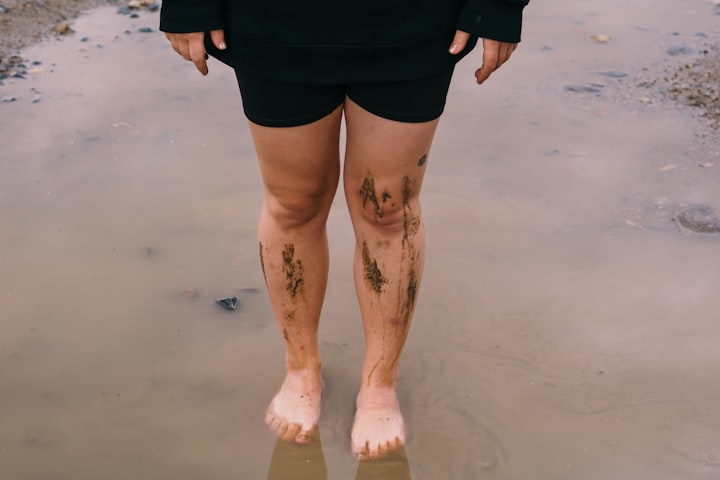Do You Know, Knee Pain is a Myth?
All that you wanted to know about knee pain, root causes and how to prevent them.

Being a runner for more than a decade, a few of the repeated questions that people keep asking me are these.
1. "Don't you get knee pain from years of your running?"
2. "How do you stay in the sport of running without getting a knee injury?"
3. "How do you recover from a knee injury?"
Probably, every runner or athlete is being asked the same questions as well across the globe.
The most common fear with any sport that people have is probably knee pain or any other joint pain. Is knee injury real or a myth? Can one stay without getting their knee injured at all? What is the recovery mechanism if one gets injured?
Let's review these in this article.
Why do people get knee pain in the first place?
Any physical movement (jumping, walking, running, or any other quick movements as in sports) has the potential to cause knee pain. Because most of the load is taken by the major joints (hip, knee, and ankle to name a few) in our lower limbs in all our physical activities.
For example, when we run, as much as 3 to 8 times our body weight force can go through the knee for every step of our run. But it is commonly assumed to be 4 times. So, you can imagine how strong our knee should be to take that amount of force!
So if joints are taking the most load, is there anything in our body that can help? Yes, there is. Our muscles, tendons, and ligaments are a few critical components that can protect our joints from taking the full load or force. The more we keep our muscles, tendons, and ligaments strengthened and conditioned, we would have better possibilities to prevent knee or joint pain.
Remember the more we don't pay attention to these components that could take the load, we have more probability of getting knee pain.
What is our Knee made of?
My longing is always that everyone understood the basic constructs of our body. When any trainee approaches me and says they have knee pain. and if I asked, do they know about the knee in little detail and why and what caused the pain, they would mostly have no answers. Of course, that's where coaches and trainers are coming to help trainees.
One need not go too much into detail but can learn very basics as mentioned below.
Our knee joint is made of three bones - the femur, tibia, and patella. The patella, also called the knee cap, connects quadricep muscles to tendons and then to the tibia). And then, there are meniscus and cartilage that sits between the femur and tibia to make the knee movements smoother, along with synovial fluid acting as a lubricant.
Once we start to understand these basics, we develop an awareness of our goals and training intensity to keep our joints intact.
What exercises to do to strengthen muscles around the knee?
You would get plenty of videos on YouTube and other places to focus on strengthening muscles, tendons, and ligaments around your knee.
Depending on your current body composure, you may have to do one or more of the following.
- If you have not been active, haven't even walked regularly. Starting with walking regularly can build strength for muscles and tendons to start with.
- If you have been walking without doing regular strengthening workouts, you may want to start with strength workouts, maybe twice a week.
- Exercises focusing on strength for quadriceps, hamstring, gluteus, calves, hip, and core would come a long way.
What else can be done apart from strengthening?
Generally, most people presume that whatever activity they do, takes care of their wellness, be it walking, running, or playing a sport. The fundamental thing to understand is that, if we did anything repeatedly, it has the potential to cause damage to either muscles or joints if we did not focus enough on a few easy recovery mechanisms.
- Performing regular stretches post the activity for key muscles - quadriceps, hamstring, calves, plantar fasciitis, ankle ligaments.
- One may even do Yoga Asanas weekly once or twice dedicating time to improving flexibility and mobility in the body.
- Taking regular massages also can come a long way to keep our body, especially muscles, relaxed and conditioned.
To sum it up:
I wouldn't say knee pain is a complete myth, but we can make it a myth for ourselves if we worked to protect our knees through proper strengthening, and recovery regimens as part of our training and sports activities.
I know of many senior runners (age goes up to 100+) across the globe who are proving time and again, that anyone can keep running or be in a sport without developing knee pain only if they worked to protect their knee through recommended training. So, never think age is a constraint. You can start with running or any sport at any age. You can gradually build your expertise in the sport without doing too much too soon.
Taking the help of trainers and coaches can come a long way, but no one can help us as much as we help ourselves. I have seen many runners who go too much too soon despite advice from coaches and signals that they get from their bodies as they developed injuries.
Set a meaningful goal, develop a proper plan, and then, work to meet your goal. If you get any niggles or pain consistently, time to stop training and recover from the damage before proceeding further.
Hope this article helped to shed some light on the knee and joint pains, why we get those and ways to strengthen and recover.
About the author:
Ganesh Kuduva is an ultramarathon runner, a health and wellness coach, and an author. He brings 13+ years of experience with running, training, injuries, and recovery. As a coach, his vision is to impart knowledge and training to people to make them holistic runners. Providing wisdom on how one can train consistently and be on their choice of sports by following systematic training plans by staying uninjured.
If you liked my article, please subscribe. Also, do not forget to leave a heart!
You can also buy my book on running, written to inspire all aspiring runners to pick running and help seasoned runners to improve their running towards holistic wellness - Be a Runner Forever - How to Become and Be an Inspired Holistic Runner
Visit Runner-Forever to learn more!
Join Runner-Forever Facebook Group and Runner-Forever Facebook Page, if you are keen to learn more about inspired holistic running and be able to interact with other runners who are on a similar wellness journey.
Disclaimer: This article is not medical advice. The intention is to share this for informational purposes only. This article should never be a substitute for a professional medical practitioner's treatment, analysis, or prescriptions. Never ignore professional medical advice in seeking treatment.
About the Creator
Ganesh Kuduva
LinkedIn Top Voice | Founder - Runner Forever | Health & Wellness Coach | Author of BE A RUNNER FOREVER (Available on Amazon) | Corporate H&W Speaker | Follow me for posts on Health and Life Skills (www.runner-forever.com)






Comments (1)
Like the content? 📢 Hit the Subscribe button on my profile to get an instant notification as I post my articles 📢 Share the article in your network I am an experienced health and wellness coach helping individuals with running, fitness, nutrition, weight management, and type-2 diabetes reversal. You want to transform your health and wellness? DM me for a free consultation. Here's my LinkedIn profile - https://www.linkedin.com/in/ganesh-kuduva-health-coach-2903457/